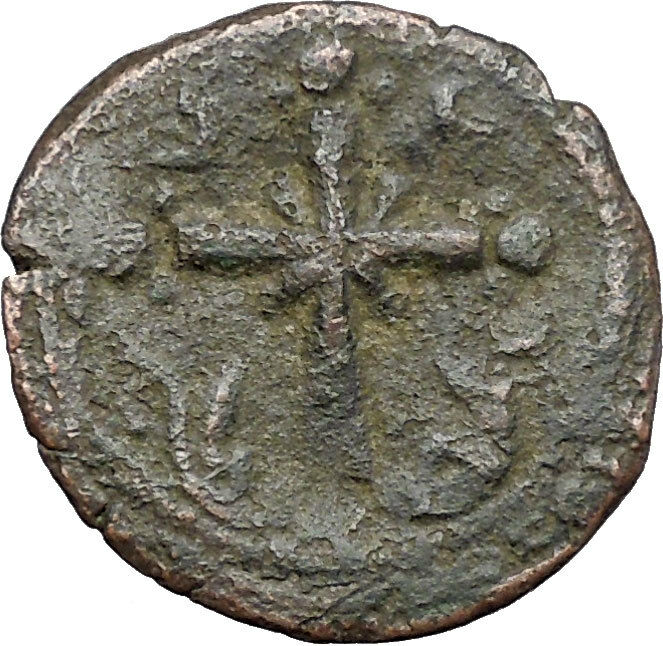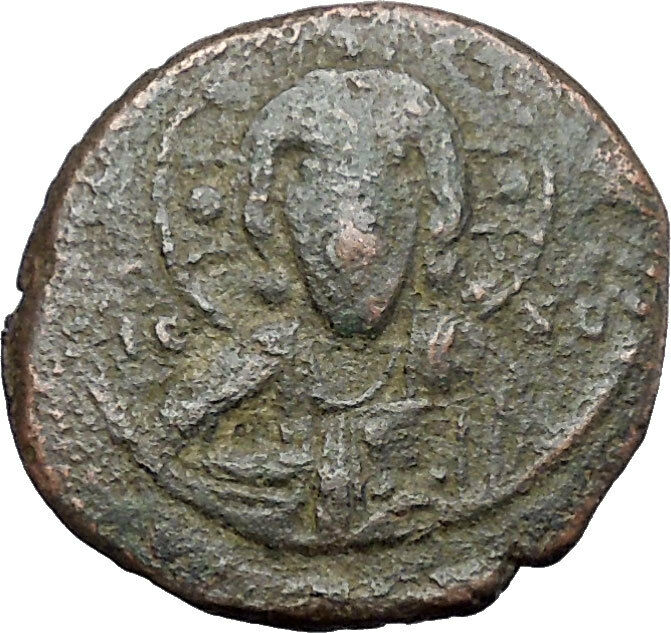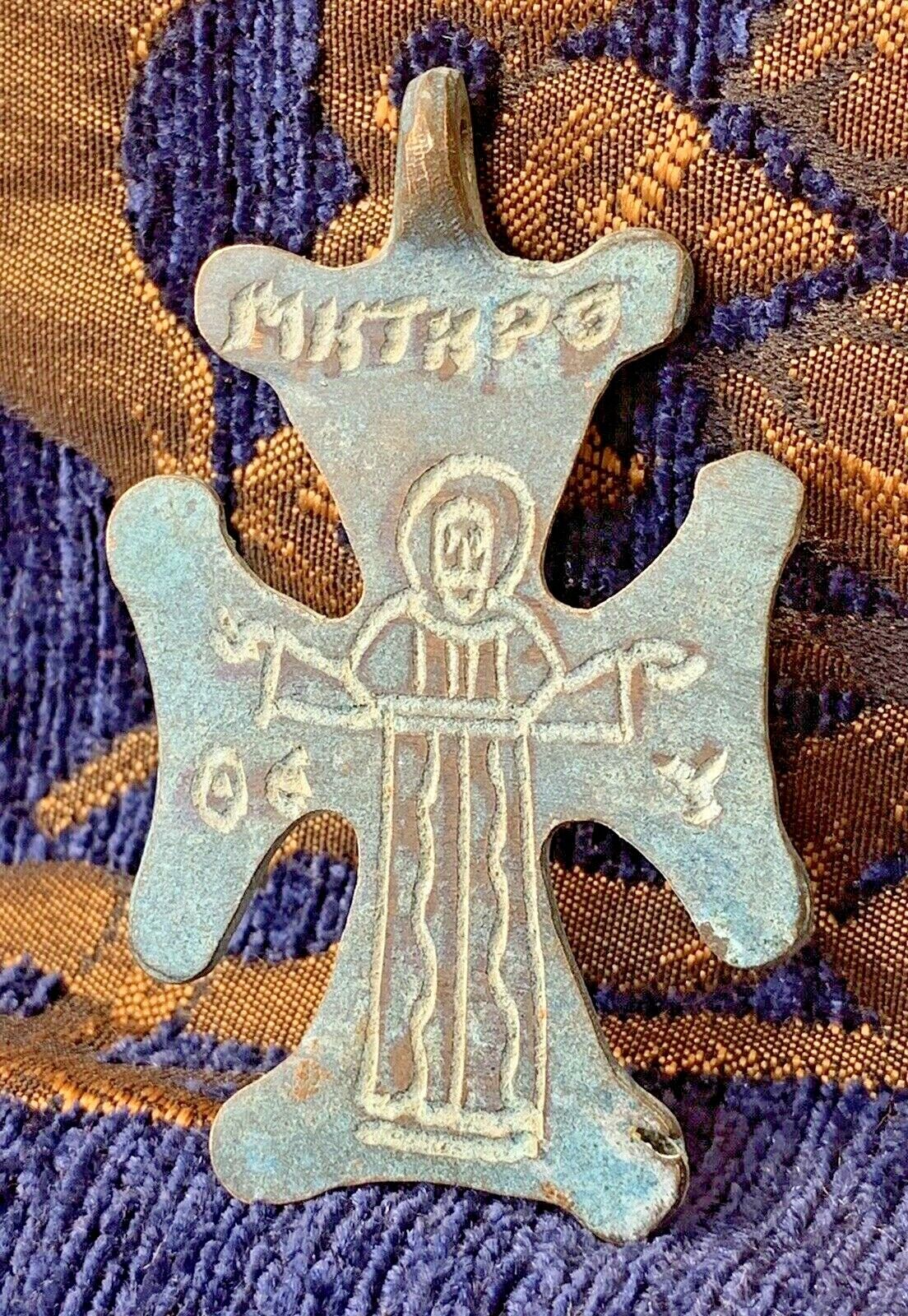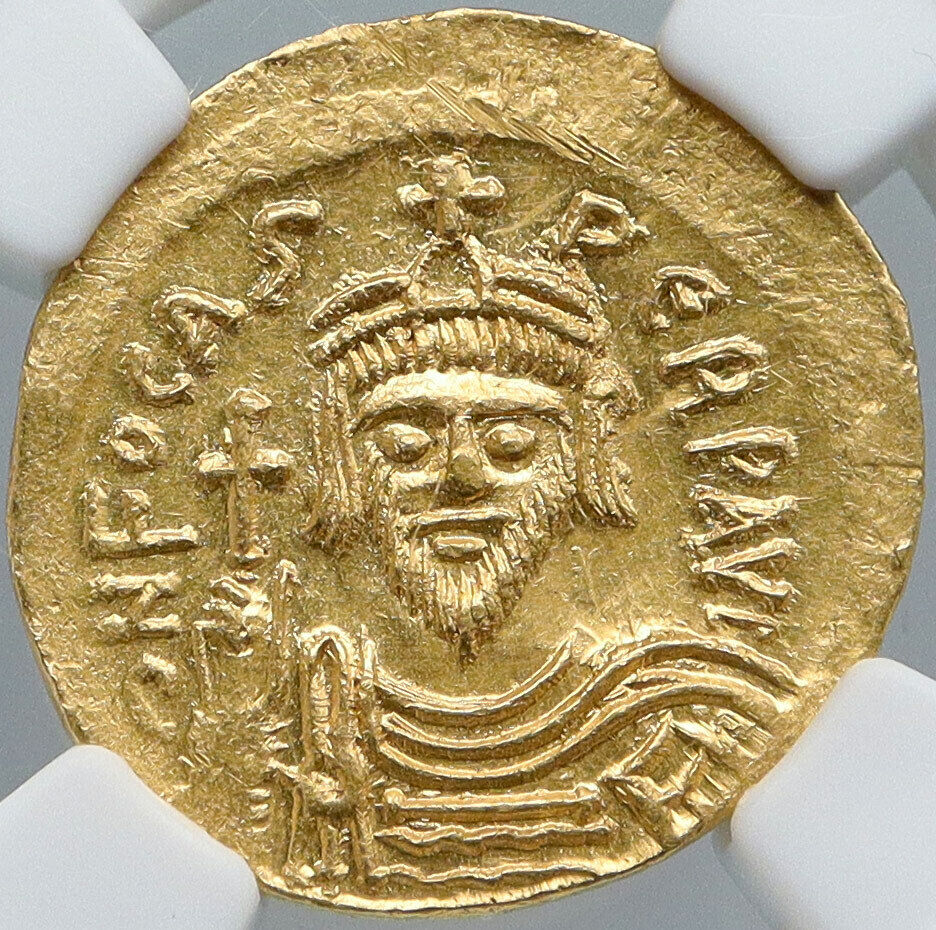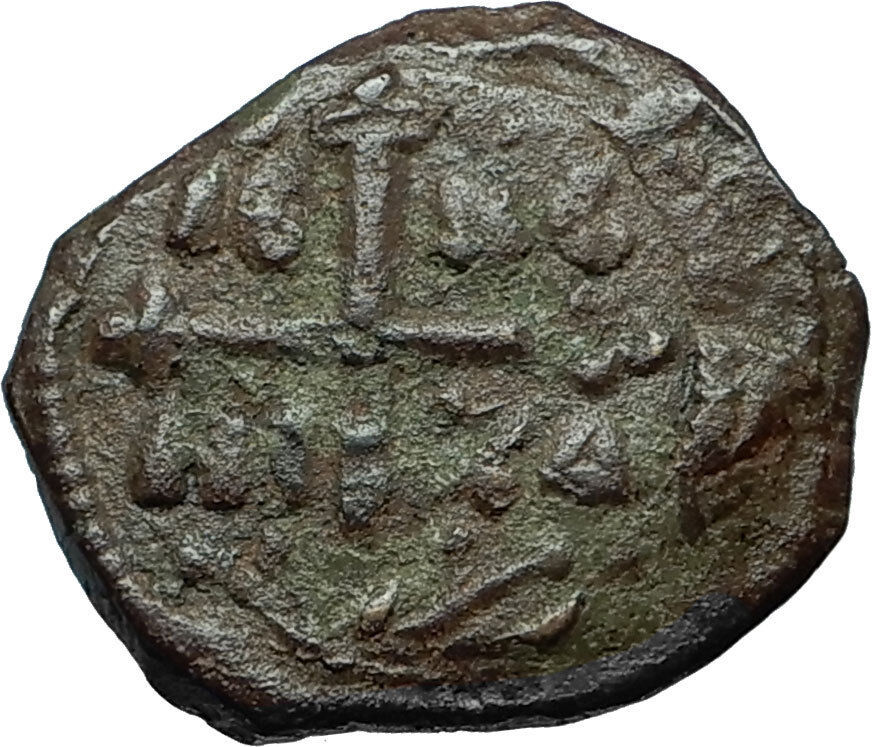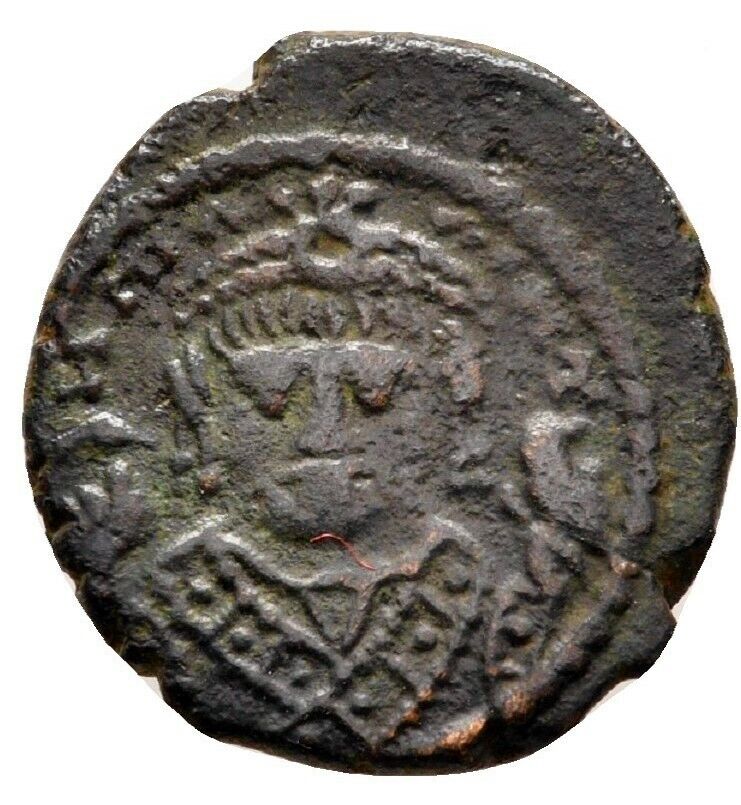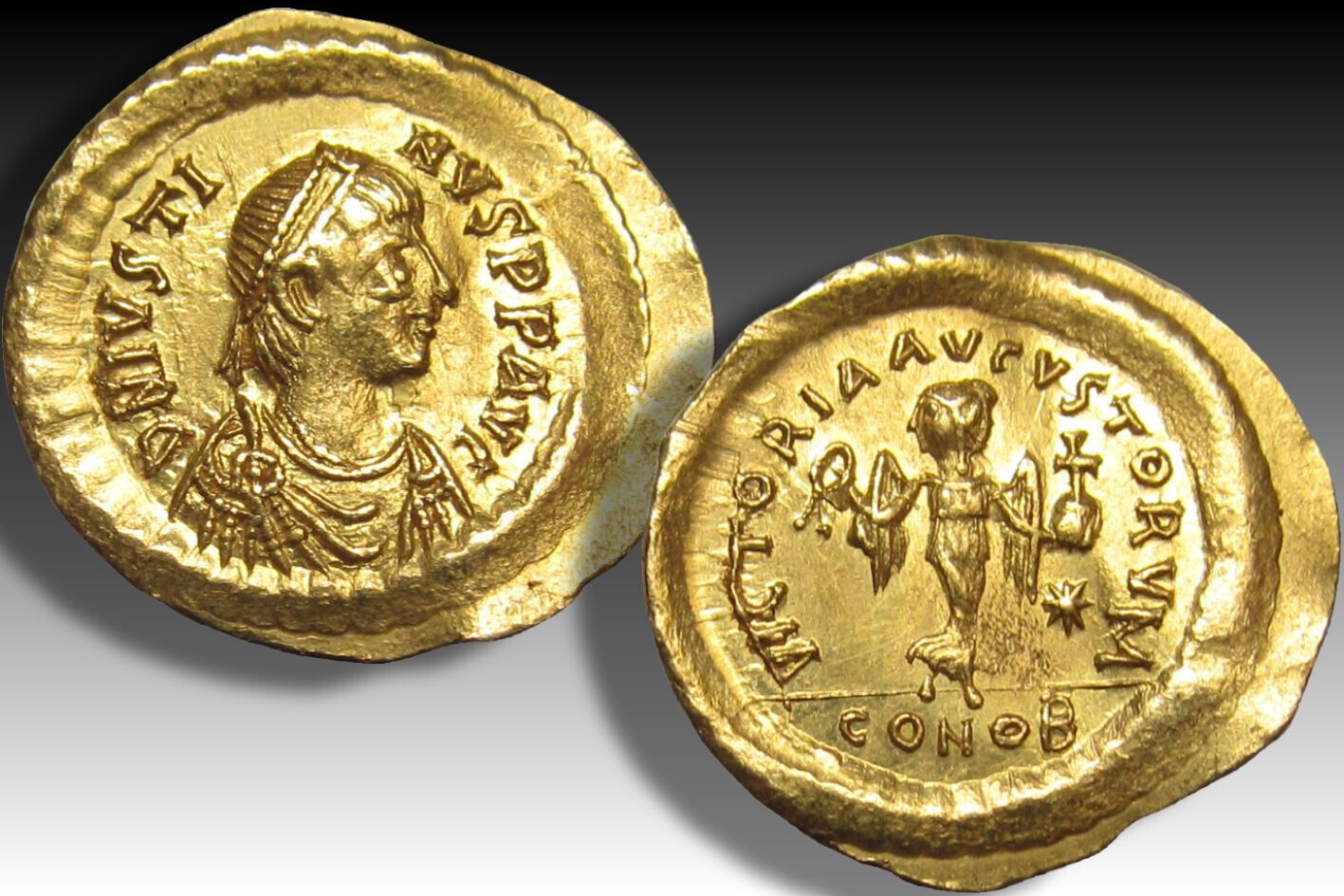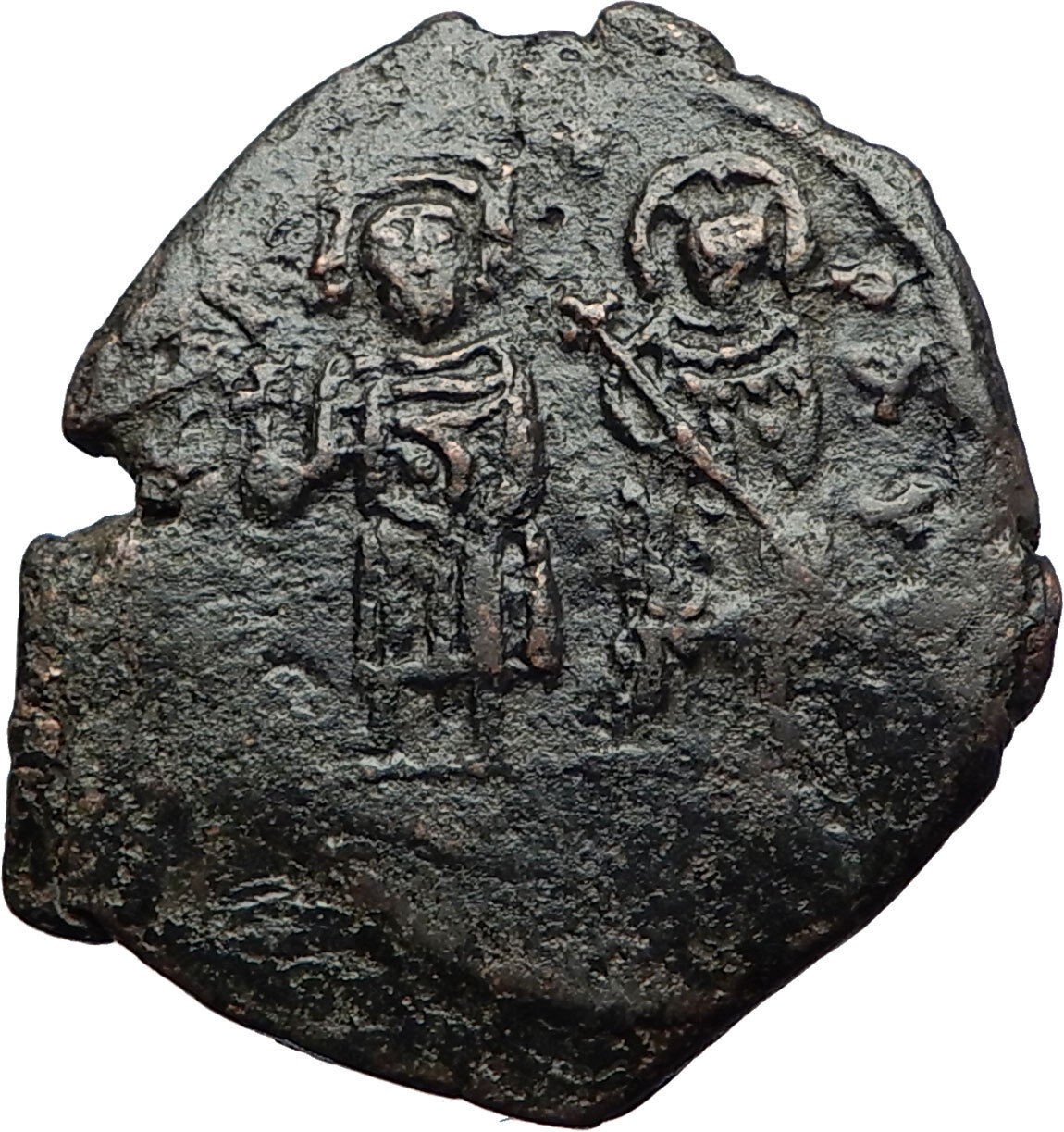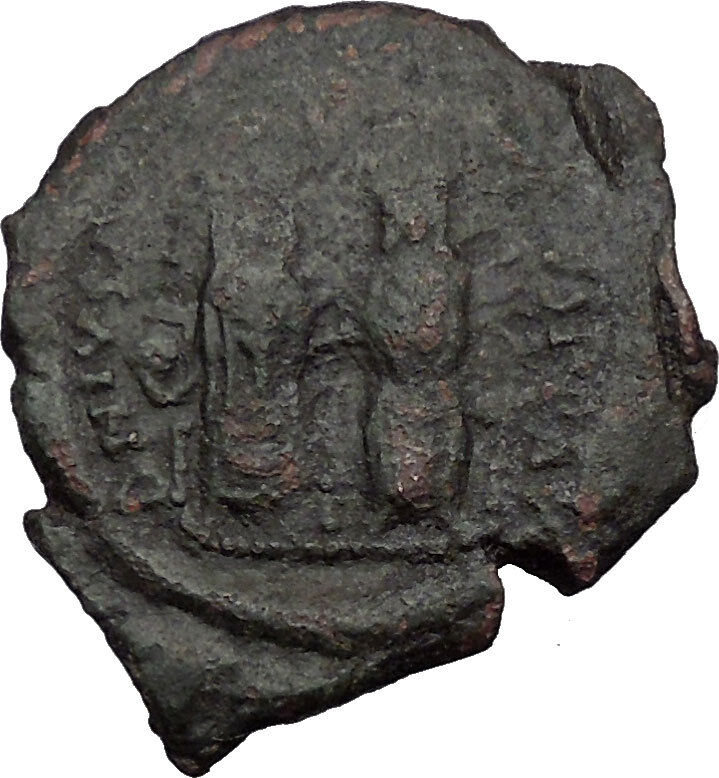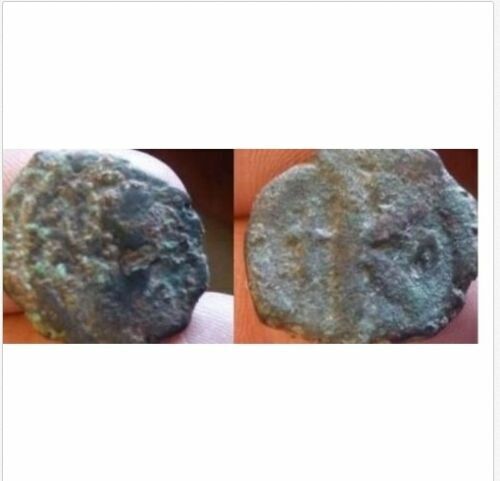-40%
JESUS CHRIST Class I Anonymous Ancient 1078AD Byzantine Follis Coin CROSS i48301
$ 73.92
- Description
- Size Guide
Description
Item:i48301
Authentic Ancient Coin of:
Byzantine Empire
Anonymous Class I
Bronze Follis 26mm (5.77 grams)
Struck during the reign of Nicephorus III - 24 March 1078 - 4 April 1081 A.D.
Reference: Sear 1889
Bust of
Christ
facing, wearing nimbus crown, pallium and colobium, and raising right hand in beneditcion, in left hand, the book of Gospels, IC to left, XC to right; within border.
Latin
cross
, with X at center, and globule and two pellets at each extremity; in lower field, on either side, floral ornament; in uppper field, on either side, crescent.
For more than a century, the production of Follis denomination Byzantine coins had religious Christian motifs which included included Jesus Christ, and even Virgin Mary. These coins were designed to honor Christ and recognize the subservient role of the Byzantine emperor, with many of the reverse inscriptions translating to "Jesus Christ King of Kings" and "May Jesus Christ Conquer". The Follis denomination coins were the largest bronze denomination coins issued by the Byzantine empire, and their large size, along with the Christian motif make them a popular coin type for collectors. This series ran from the period of Byzantine emperors John I (969-976 A.D.) to Alexius I (1081-1118 A.D.). The accepted classification was originally devised by Miss Margaret Thompson with her study of these types of coins. World famous numismatic author, David R. Sear adopted this classification system for his book entitled, Byzantine Coins and Their Values. The references about this coin site Mr. Sear's book by the number that they appear in that work. The class types of coins included Class A1, Class A2, Class B, Class C, Class D, Class E, Class F, Class G, Class H, Class I, Class J, Class K. Read more and see examples of these coins by reading the JESUS CHRIST Anonymous Class A-N Byzantine Follis Coins Reference.
Click here to see all the Jesus Christ Anonymous Follis coins for sale.
Click here to see all coins bearing Jesus Christ or related available for sale.
You are bidding on the exact item pictured, provided with a Certificate of Authenticity and Lifetime Guarantee of Authenticity.
Jesus of Nazareth
(
c.
5 BC/BCE –
c.
30 AD/CE), also referred to as
Jesus Christ
or simply
Jesus
, is the central figure of
Christianity
. Most
Christian denominations
venerate him as
God the Son
incarnated
and believe that he
rose from the dead
after being
crucified
.
The principal sources of information regarding Jesus are the four
canonical gospels
, and most
critical scholars
find them, at least the
Synoptic Gospels
, useful for reconstructing Jesus’ life and teachings. Some scholars believe apocryphal texts such as the
Gospel of Thomas
and the
Gospel according to the Hebrews
are also
relevant
.
Most critical historians agree that Jesus was a
Jew
who was regarded as a teacher and
healer
, that he
was baptized
by
John the Baptist
, and
was crucified
in
Jerusalem
on the orders of the
Roman Prefect
Judaea
,
Pontius Pilate
, on the charge of
sedition
against the
Roman Empire
. Critical Biblical scholars and historians have offered competing descriptions of Jesus as a self-described
Messiah
, as the leader of an apocalyptic movement, as an itinerant sage, as a charismatic healer, and as the founder of an independent religious movement. Most contemporary scholars of the
Historical Jesus
consider him to have been an independent, charismatic founder of a Jewish restoration movement, anticipating an imminent apocalypse. Other prominent scholars, however, contend that Jesus' "
Kingdom of God
" meant radical personal and social transformation instead of a future apocalypse.
Christians traditionally believe that Jesus was
born of a virgin
:529–32
performed
miracles
,
:358–59
founded
the Church
,
rose from the dead
, and
ascended
into
heaven
,
:616–20
from which he
will return
.
:1091–109
Most Christian scholars today present Jesus as the awaited Messiah promised in the
Old Testament
and as God, arguing that he fulfilled many Messianic prophecies of the
Old Testament
. The majority of Christians worship Jesus as the incarnation of God the Son, one of three divine persons of a
reject Trinitarianism
Trinity
, wholly or partly, believing it to be non-scriptural.
Nikephoros III Botaneiates
, Latinized as
Nicephorus III Botaniates
(
Greek
:
Νικηφόρος Βοτανειάτης
, c. 1002 – 10 December 1081) was
Byzantine
emperor
from 1078 to 1081. He belonged to a family which claimed descent from the Byzantine
Phokas family
.
Early career
Nikephoros Botaneiates had served as general from the reign of
Constantine IX
. Drawn to politics, he had been an active participant in the uprising that brought
Isaac I
to the throne in 1057, including a prominent role in the
Battle of Petroe
. Although considered a competent general, he had suffered a number of humiliating setbacks throughout his career. In 1064, he, together with
Basil Apokapes
,
doux
of
Paradounavon
, defended the
Balkan
frontiers against the invading
Oghuz Turks
, but was defeated and suffered the humiliation of being taken captive. However, the outbreak of an epidemic soon began decimating the Turks and the prisoners were recovered, while the survivors were quickly recruited in the
Byzantine army
.
In 1067, he had been considered as a possible husband for the empress
Eudokia Makrembolitissa
, widowed wife of Constantine X, but she eventually set her heart on
Romanos IV Diogenes
. Excluded from Romanos's campaign at
Manzikert
, he retired to his estates in
Anatolia
. Eventually, under
Michael VII Doukas
, he became
strategos
of the
Anatolic theme
and commander of the troops in
Asia Minor
. Here he participated in the shambolic acts that crippled the empire’s eastern provinces, including his strategic retreat when
Caesar John Doukas
was confronting
Norman
mercenary rebels, resulting in the humiliating defeat of the Byzantine army, and the capture of John Doukas.
In 1078 he revolted against Michael VII and his finance minister
Nikephoritzes
, and with the support of the
Seljuk Turks
who provided him with valuable troops he marched upon
Nicaea
, where he proclaimed himself emperor. In the face of another rebellious general,
Nikephoros Bryennios
, his election was ratified by the aristocracy and clergy, while Michael VII abdicated and became a monk. On 24 March 1078, Nikephoros III Botaneiates entered Constantinople in triumph and was crowned by
Patriarch Kosmas I of Constantinople
. With the help of his general
Alexios Komnenos
, he
defeated
Bryennios and other rivals, but failed to clear the invading Turks out of
Asia Minor
.
Reign
To solidify his position, on the death of his second wife Nikephoros III sought to marry
Eudokia Makrembolitissa
, the mother of Michael VII and the widow of
Constantine X
and Romanos IV. This plan was undermined by the
Caesar
John Doukas
, and Nikephoros instead married
Maria of Alania
. They married in contravention of church canons, as Maria was still at that time, the wife of Michael VII who had entered the monastery of Stoudios. Nevertheless, Nikephoros did not recognize the succession rights of Maria's son
Constantine Doukas
, while his plan to promote his worthless nephew Synadenos as co-emperor exposed him to the suspicion and plots of the surviving portions of the Doukas faction at court. Nikephoros' administration did not win him much support, as his favored courtiers alienated much of the older court bureaucracy and failed to stop the devaluation of the Byzantine currency.
Almost immediately, the uprisings began. Apart from the discontent of the Byzantine aristocracy, several
Armenian
princes in Asia Minor attempted to establish their independence from the empire. Two
Paulician
leaders launched their own rebellion in
Thrace
, in a brutal religious conflict that was not easily suppressed. Consequently, Nikephoros became increasingly dependent on the support of Alexios Komnenos, who successfully defeated the rebellion of
Nikephoros Basilakes
in the Balkans (1079) and was charged with containing that of
Nikephoros Melissenos
in Anatolia (1080). The Byzantine Empire also faced foreign invasion, as the
Norman
Duke
Robert Guiscard
of Apulia declared war under the pretext of defending the rights of young Constantine Doukas, who had been engaged to Robert's daughter Helena. As Alexios was entrusted with substantial armed forces to combat the impending Norman invasion, the Doukas faction, led by the Caesar John, conspired to overthrow Nikephoros and replace him with Alexios. Failing to secure the support of either the
Seljuk Turks
or Nikephoros Melissenos (both parties being his traditional enemies), Nikephoros III was forced to abdicate in favour of the Komnenos dynasty, to which he was connected through the engagement of his grandson to the daughter of Alexios's older brother Manuel. The deposed emperor retired into the
monastery that he had endowed
and died later the same year.
Nikephoros III in fiction
Nicephorus III
is also a fictional
Byzantine Emperor
ruling in the beginning of the 14th century in
Harry Turtledove
's
alternate history
novel
Agent of Byzantium
.
Frequently Asked Questions
How long until my order is shipped?
Depending on the volume of sales, it may take up to 5 business days for shipment of your order after the receipt of payment.
How will I know when the order was shipped?
After your order has shipped, you will be left positive feedback, and that date should be used as a basis of estimating an arrival date.
After you shipped the order, how long will the mail take?
USPS First Class mail takes about 3-5 business days to arrive in the U.S., international shipping times cannot be estimated as they vary from country to country. I am not responsible for any USPS delivery delays, especially for an international package.
What is a certificate of authenticity and what guarantees do you give that the item is authentic?
Each of the items sold here, is provided with a Certificate of Authenticity, and a Lifetime Guarantee of Authenticity, issued by a world-renowned numismatic and antique expert that has identified over 10000 ancient coins and has provided them with the same guarantee. You will be quite happy with what you get with the COA; a professional presentation of the coin, with all of the relevant information and a picture of the coin you saw in the listing.
Compared to other certification companies, the certificate of authenticity is a -50 value. So buy a coin today and own a piece of history, guaranteed.
Is there a money back guarantee?
I offer a 30 day unconditional money back guarantee. I stand behind my coins and would be willing to exchange your order for either store credit towards other coins, or refund, minus shipping expenses, within 30 days from the receipt of your order. My goal is to have the returning customers for a lifetime, and I am so sure in my coins, their authenticity, numismatic value and beauty, I can offer such a guarantee.
Is there a number I can call you with questions about my order?
You can contact me directly via ask seller a question and request my telephone number, or go to my About Me Page to get my contact information only in regards to items purchased on eBay.
When should I leave feedback?
Once you receive your order, please leave a positive. Please don't leave any negative feedbacks, as it happens many times that people rush to leave feedback before letting sufficient time for the order to arrive. Also, if you sent an email, make sure to check for my reply in your messages before claiming that you didn't receive a response. The matter of fact is that any issues can be resolved, as reputation is most important to me. My goal is to provide superior products and quality of service.
